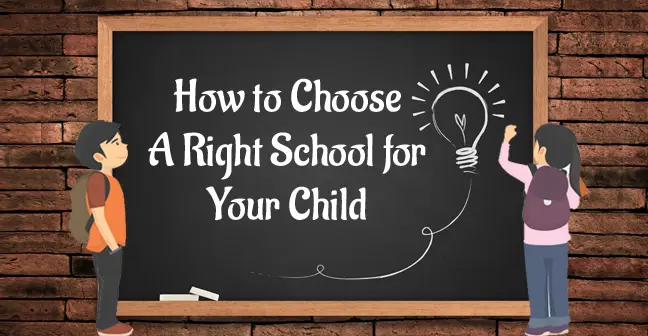Choosing the right school for your child is a monumental decision. After all, you’re picking a place that will nurture their intellectual growth, cultivate their social skills, and shape them into well-rounded individuals. It can feel overwhelming, but with careful consideration and a little detective work, you can find the perfect environment for your child to blossom.
This guide will equip you with the knowledge and steps to navigate the exciting journey of selecting the right school. We’ll explore key factors to consider, delve into research strategies, and equip you with questions to ask during school visits. By the end, you’ll feel confident and prepared to make an informed decision for your child’s future.
Understanding Your Child’s Needs and Dreams
The very first step starts with introspection – not about schools, but about your child! Every child is unique, with their own individual strengths, interests, and learning styles. Here are some questions to ponder:
- What is your child’s personality like? Are they shy or outgoing? Do they thrive in collaborative settings or prefer independent learning?
- What are your child’s academic strengths and weaknesses? Do they have a natural aptitude for math or a passion for creative writing?
- Does your child have any special interests or talents? Maybe they’re a budding musician or a whiz at coding. Are there schools that offer programs that cater to these interests?
- How does your child learn best? Do they prefer hands-on activities or more traditional lectures?
By understanding your child’s individual needs and aspirations, you can narrow down your search to schools that can provide a nurturing and stimulating environment where they can flourish.
The Big Picture: School Philosophies and Environments
Schools aren’t one-size-fits-all. They each have their own unique philosophy, curriculum, and approach to learning. Here are some aspects to consider:
- Public, Private, or Charter? Public schools are free to attend, funded by the government, and offer a standardized curriculum. Private schools typically charge tuition and have more flexibility in their curriculum and approach. Charter schools are public schools with some independence in curriculum and operation.
- Traditional vs. Progressive: Traditional schools emphasize core subjects like math, science, language arts, and social studies. Progressive schools often take a more hands-on, project-based approach, integrating subjects and encouraging critical thinking.
- Religious Affiliation: If faith-based education is important to you, there are many schools with religious affiliations that integrate religious teachings into the curriculum.
- Single-Sex vs. Coeducational: Single-sex schools offer a learning environment focused on one gender, while coeducational schools provide a more diverse environment.
Think about what kind of environment you envision for your child. Do you want a structured, traditional approach, or a more progressive, hands-on experience?
Researching Like a Pro: Unveiling the Best Options
Now that you have a better understanding of your child’s needs and the educational landscape, it’s time to start researching schools! Here are some effective strategies:
- Talk to Other Parents: Seek recommendations from friends, family, and neighbors with children in similar age groups. Their firsthand experiences can be invaluable.
- School Websites and Brochures: Most schools have detailed websites outlining their philosophy, curriculum, extracurricular activities, and faculty information.
- District and State Departments of Education: These websites often provide school report cards with data on standardized test scores, class sizes, and student demographics.
- Open Houses and School Tours: Attend open houses and schedule tours to get a firsthand feel for the school environment, observe classrooms, and interact with teachers and administrators.
Once you’ve compiled a list of potential schools, delve deeper into their offerings. Read parent reviews, explore social media groups, and don’t hesitate to contact the schools directly with any questions you may have.
The Art of Asking Questions: Uncovering What Matters Most
School visits are a crucial step in your decision-making process. Here are some key questions to ask during your visits:
- Class Size and Student-Teacher Ratio: Smaller class sizes allow for more individualized attention.
- Curriculum: How does the curriculum align with your child’s learning style and interests? Are there opportunities for advanced placement or electives?
- Extracurricular Activities: Does the school offer a variety of clubs, sports, and after-school programs that pique your child’s interest?
- Special Needs Support: If your child has special needs, inquire about the school’s resources and support systems.
- Parent Involvement: How does the school encourage parental involvement? Are there opportunities to volunteer or participate in school activities?
- **Safety and Discipline


